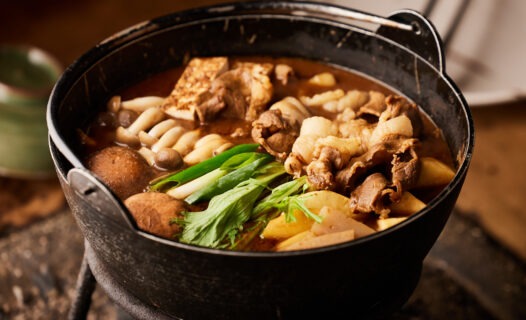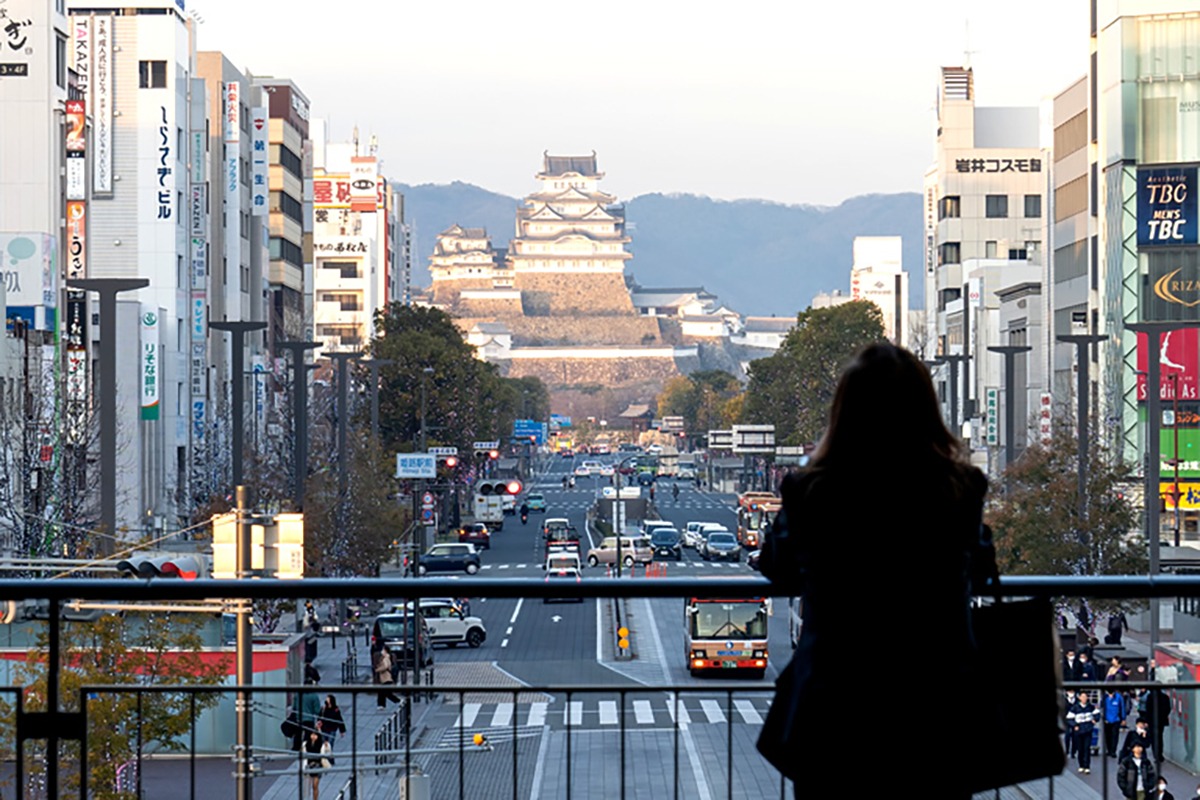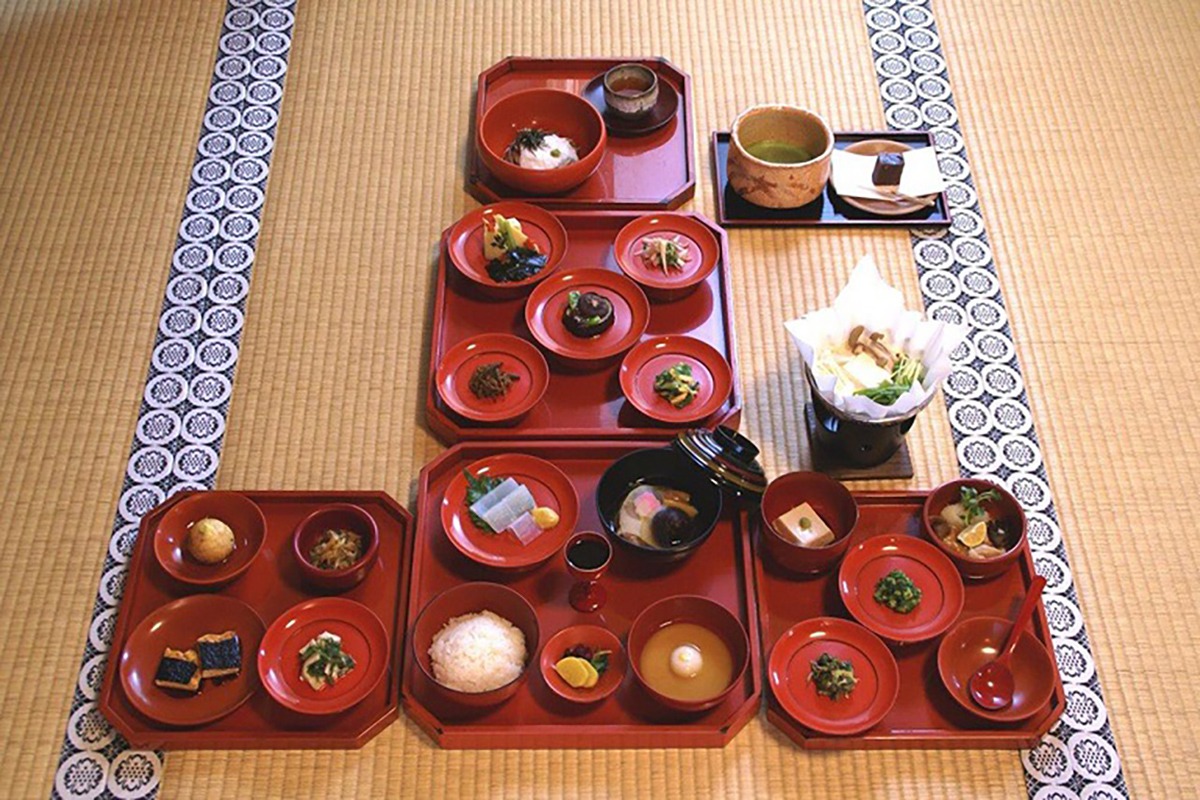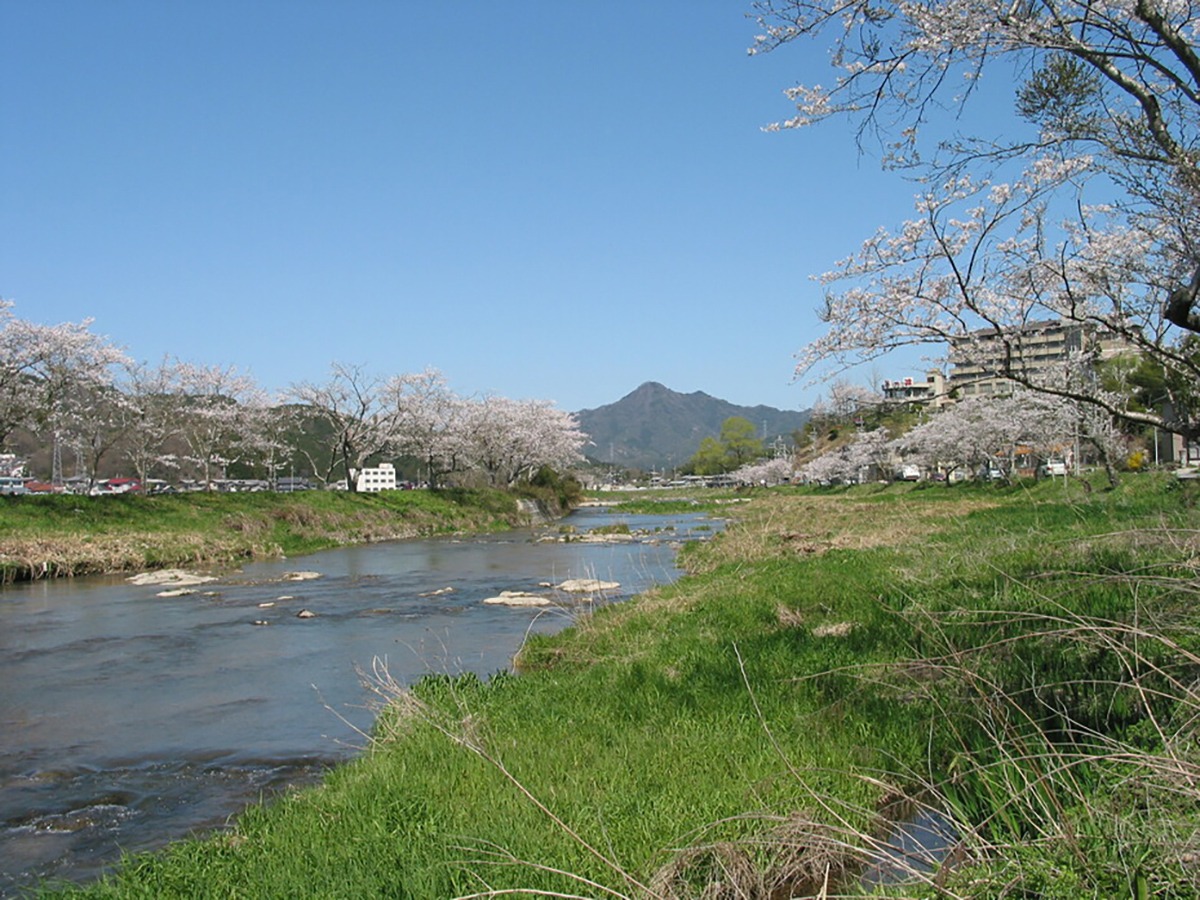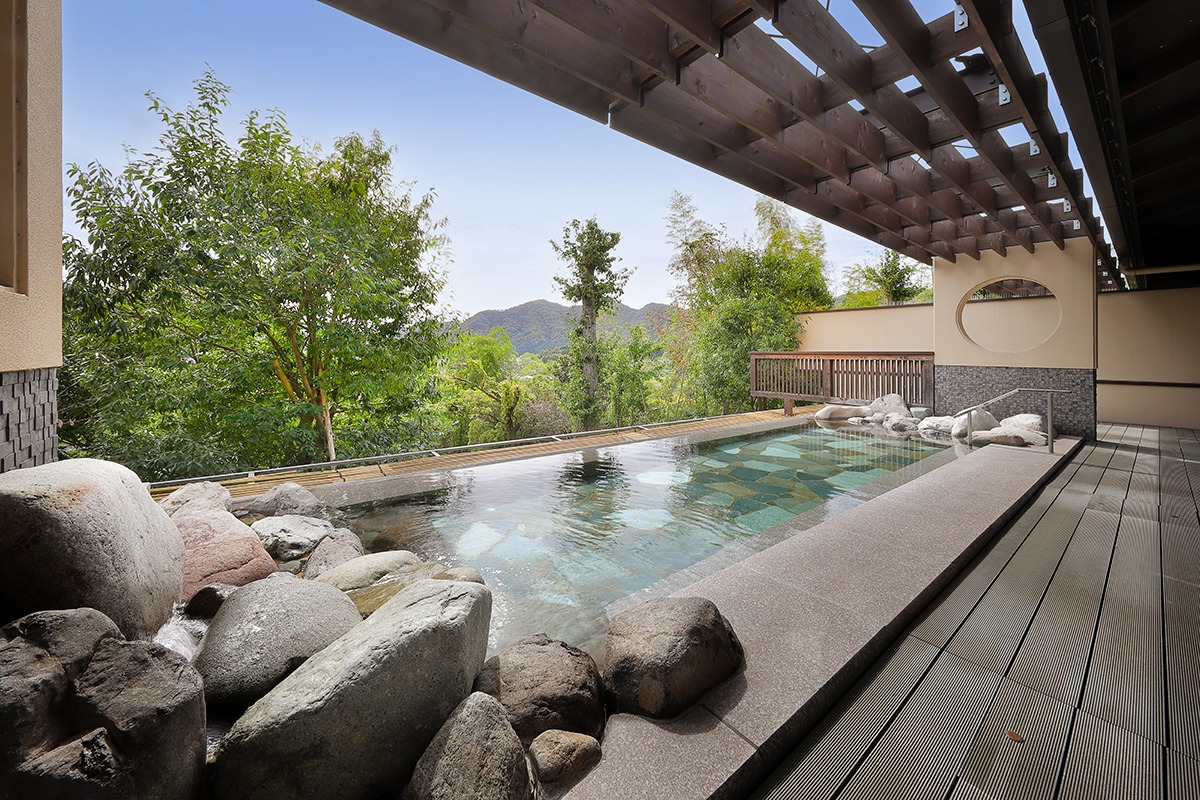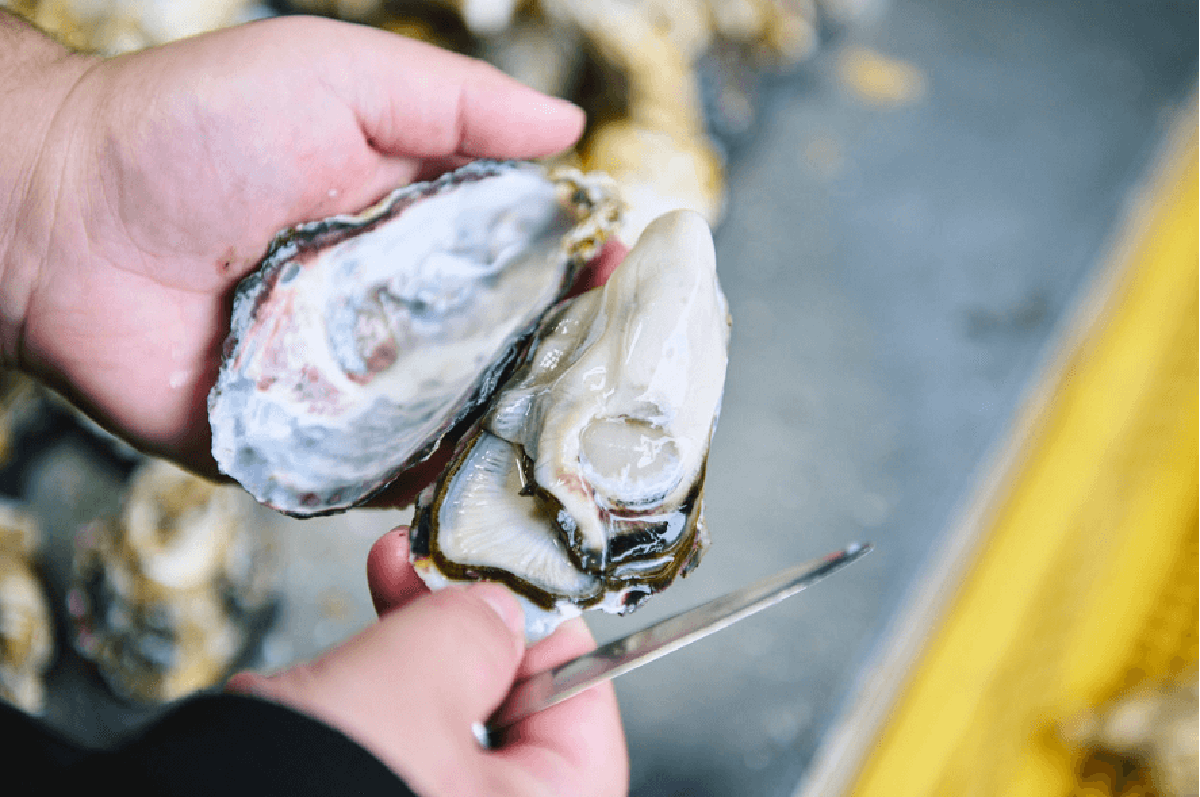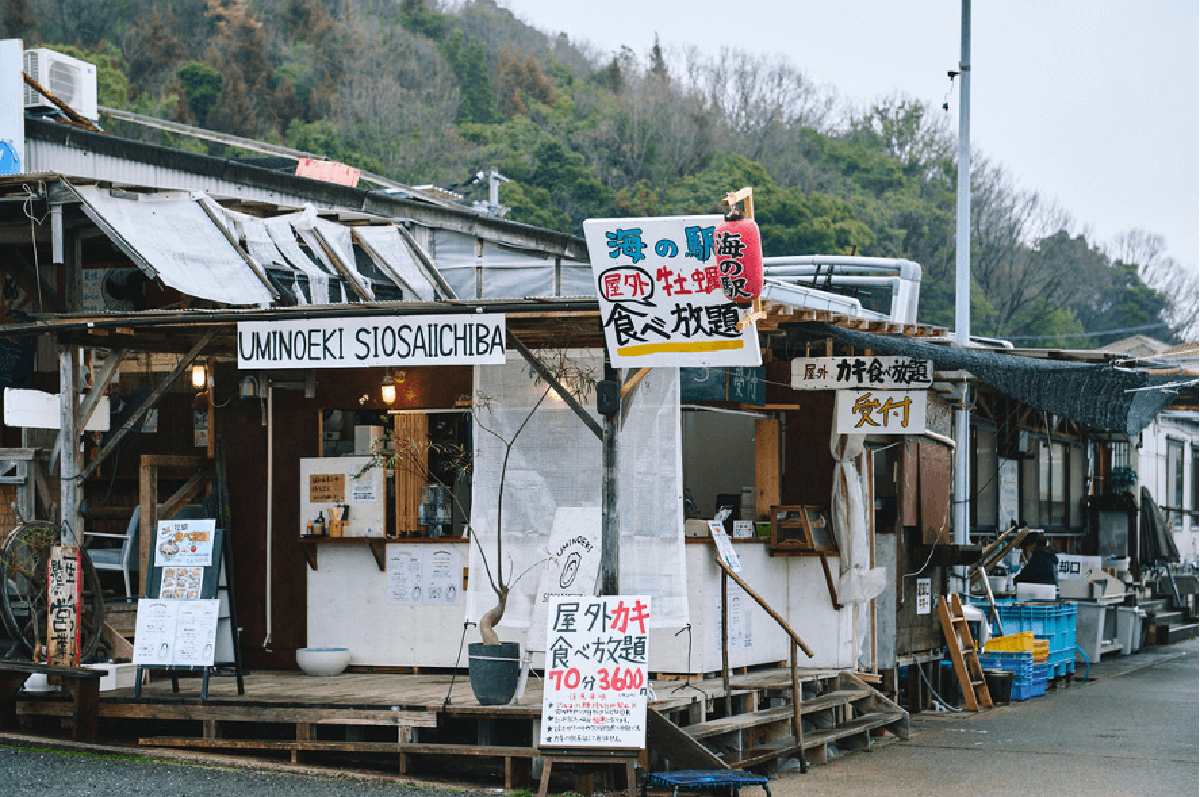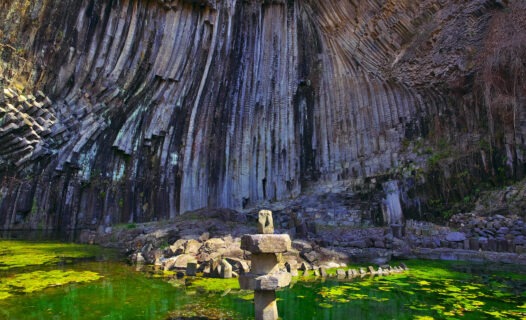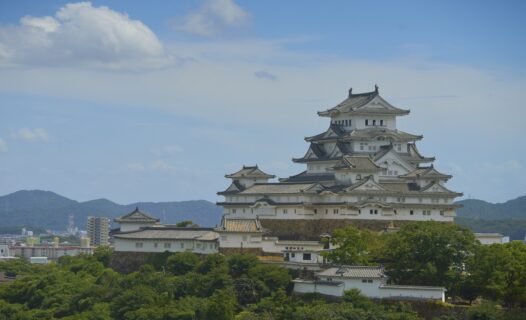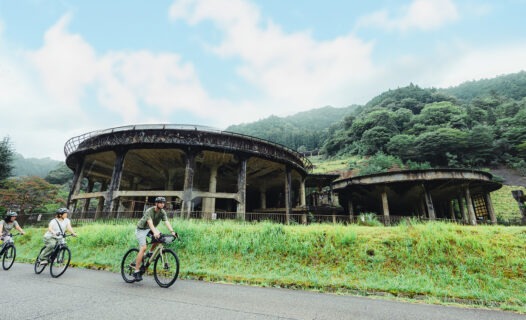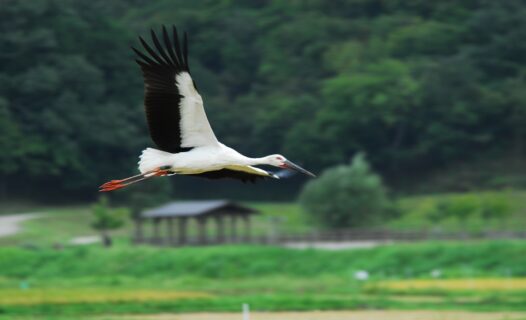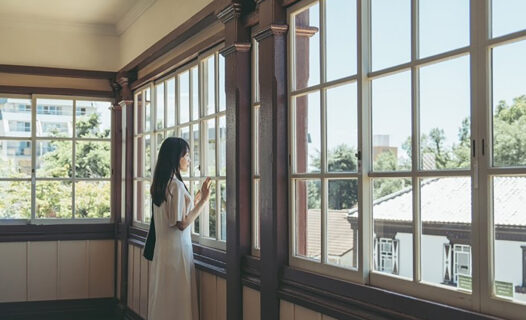Himeji is just two hours by limousine bus from Kansai International Airport, or about 30 minutes by Shinkansen from Osaka Station (two stops). The area is home to romantic ancient castle ruins and Buddhist temples with over a thousand years of history, many of which have been featured in classic films. Originally built as fortresses for warfare, Japan’s castles eventually evolved into symbols of power and wealth. Embrace your imagination and picture yourself as a castle lord, contemplating how you might once have lived, as you embark on a journey that lets you step into the shoes of characters from famous films.
Take a Moment to Reflect on Himeji Castle, the Fortress That Captivated Kurosawa
Castle View, an observation deck directly connected to Himeji station, offers a view that brings together the modern cityscape and historic castle.
A 20-minute walk from Himeji station brings you to Himeji Castle, a UNESCO World Heritage site. Built in 1346, the castle was expanded by successive lords and took its present form in 1618. Remarkably, it has survived over 400 years unharmed by the ravages of war, earning it the nickname “Castle of Peace.” Its pristine white exterior, resembling a white heron spreading its wings, has also earned it the moniker “White Heron Castle.” Its elegant structure has captivated many a filmmaker, including the internationally renowned director Akira Kurosawa, who featured it in masterpieces like Ran and Kagemusha.
Himeji Castle
Address: 68 Honmachi, Himeji, Hyogo Prefecture, Japan
Tel.: 079-285-1146
Hours: 9:00 AM – 5:00 PM (Last admission at 4:00 PM) Hours vary by season
Closed: December 29–30
Visit the Location of The Last Samurai and Discover a Michelin-Starred Restaurant
The ropeway from the foot of Mount Shosha to the temple offers spectacular views of Himeji City. The temple’s secluded precincts are about 20 minutes by bus from Himeji Castle’s Otemon Gate, followed by a ropeway ride and 30–40 minute walk from the ropeway station. Next, head to Mount Shosha’s Engyoji Temple, founded about 1,000 years ago by a monk on the mountain’s summit. The vast grounds take about two hours to explore fully. Its solemn, serene atmosphere made it a fitting location for the filming of The Last Samurai, starring Tom Cruise, and has drawn filmmakers from around the world.
Juroin Hall. Photo provided by Engyoji Temple.Engyoji’s shojin ryori (Buddhist vegetarian cuisine) requires extensive preparation, starting the night before, and is only available to groups of five or more by reservation at least three days in advance. Photo provided by Engyoji Temple.Within the temple grounds lies Juroin Hall, designated as an Important Cultural Property and home to a Michelin-starred restaurant. Here, you can savor modern interpretations of shojin ryori, traditional Buddhist cuisine that avoids the use of meat and fish, and includes sesame tofu, tempura, soba, and many more dishes in the temple’s spacious, tranquil setting.
Engyoji Temple, Juroin Hall
Address: 2968 Shosha, Himeji, Hyogo Prefecture, Japan
Shojin ryori is available from April to November (excl. Thursdays)
Tel.: 079-266-3327
Soak in the Healing Waters of Shiota Onsen, with 300 Years of History
Just a 10-minute drive from the foot of Mount Shosha, you’ll find Shiota Onsen, nestled in peaceful rural surroundings. Known for over 300 years for its therapeutic effects on the digestive system, this onsen continues to attract visitors seeking physical and spiritual rejuvenation. Relax in the open-air baths surrounded by nature, under a sky filled with stars.
From Mountain Castles to Seaside Towns: A Journey to Ako
The ruins of Ako Castle are about a 15-minute walk from JR Banshu-Ako station.The story of the Chushingura, which tells the tale of the famous revenge of the 47 Ako ronin (wandering samurai), is popular both domestically and overseas. The Ako domain’s castle, Ako Castle, where these events took place, was built over 13 years starting in 1661, but was eventually abandoned during the Meiji era. However, the gardens within the castle grounds are preserved and maintained to this day.
Ako Castle Ruins
Address: 1424-1 Kamikariya, Ako, Hyogo Prefecture
Savor the “Milk of the Ocean”: Fresh Oysters Nurtured by the Land, River, and Sea
Freshly harvested oysters, packed with nutrients and incredibly plump!The oysters from Ako and Sakoshi have become a regional brand known throughout Japan. Located to the east of Ako, Sakoshi sits at the mouth of the Chikusa River, one of Japan’s 100 best waters, surrounded by lush forests. The oysters grown here are safe, hygienic, and have a fruity flavor free from any off-taste or bitterness, making them a favorite even among those less inclined to the delicacy.
Nearby is the Sea Station Shiosai Ichiba (Market), where you can buy seasonal seafood and seaweed. There’s also an oyster shack offering all-you-can-eat oysters for 70 minutes (3,600 yen for adults).While oysters generally take three years to mature, Sakoshi oysters take only six months or so to grow to a large size. They are known for their plumpness and ability to retain their shape and texture even when cooked. Unlike other areas where oysters must be sterilized with UV-treated water before being sold for raw consumption, the pristine waters of Sakoshi Bay require no such treatment. This makes Sakoshi oysters particularly safe and easy to eat, attracting many visitors who come to try raw oysters for the first time. Don’t miss the chance to enjoy these carefully cultivated oysters, a true labor of love from the local fishermen.
Kamashima Fisheries
Address: 319 Sakoshi, Ako, Hyogo Prefecture, Japan
Tel.: 0791-48-0658 (reception: 6:30–14:00)
Hours: 8:30–016:00
Closed: Tuesdays and Saturdays
End the Day by Sinking into the Ocean Blue at Ako Onsen
About a 10-minute drive from Banshu-Ako station. Enjoy spectacular views of the Seto Inland Sea.Cap off your journey with a stay at Ako Onsen, a hot spring resort overlooking the Seto Inland Sea. Here, you can relax in the revitalizing waters, soothed by the gentle sound of the waves. The onsen’s silky smooth waters are known for their moisturizing effects, earning them the nickname “The Waters of Rejuvenation.”
As you watch the sun set over the horizon, let your thoughts drift toward what the next day will bring. Ako is just three hours away from Tokyo, Shikoku, and Kyushu, making it an ideal starting point for the next chapter of your travel story.
Access to Hyogo Prefecture
Hyogo Prefecture is accessible by Shinkansen (JR) from Tokyo, Osaka, and Kyoto. Travel by air to Kansai International Airport is also convenient, with limousine bus services to Osaka available from the airport.
The Himeji area, featured in this article, can be conveniently accessed from the Shinkansen Himeji station. Shiota Onsen is about 30 minutes away by bus, and Ako Onsen about 30 minutes away by JR.
After your journey in Hyogo Prefecture, consider continuing your trip to Kyushu by Shinkansen (JR) from Himeji.
